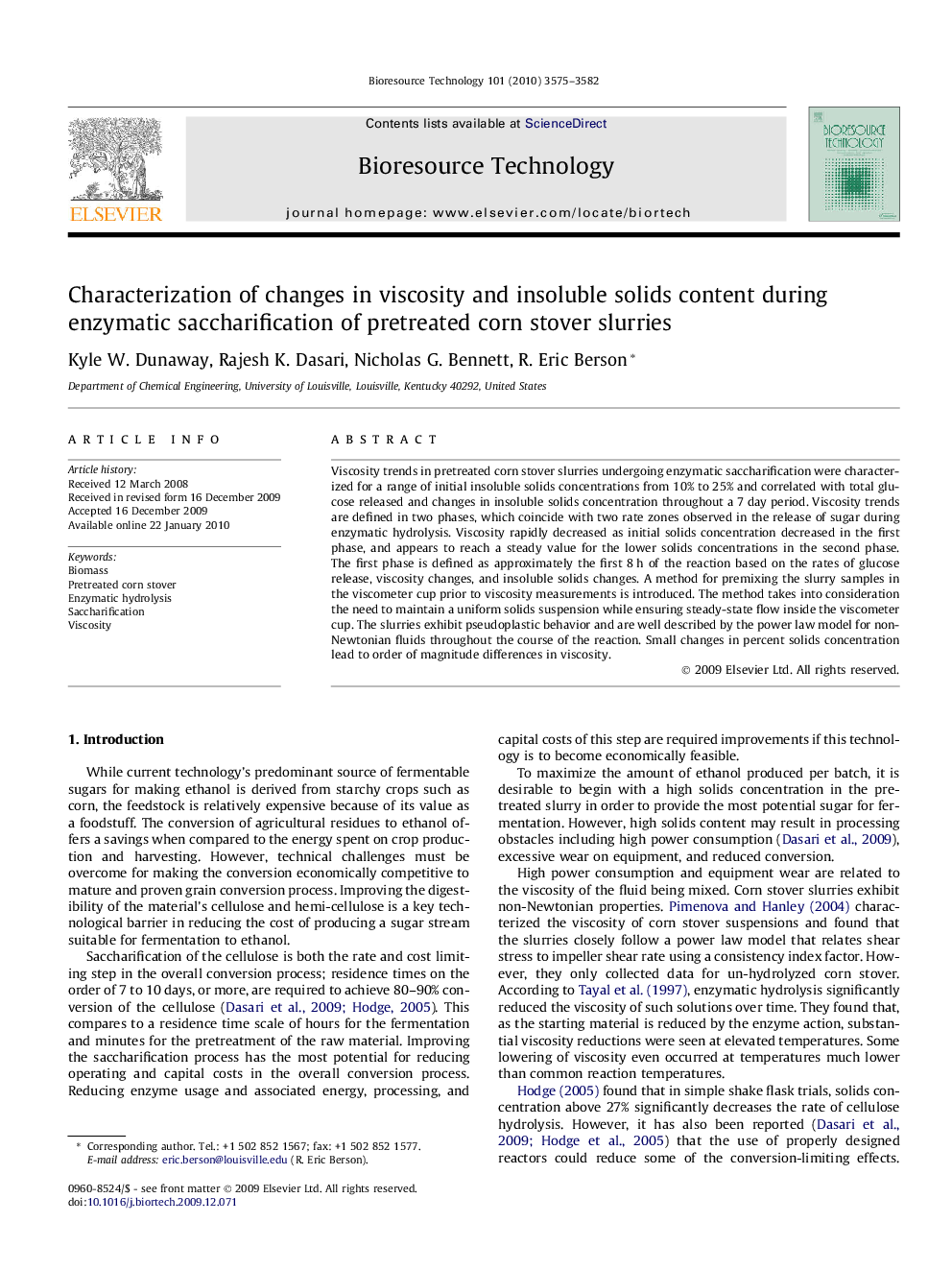| Article ID | Journal | Published Year | Pages | File Type |
|---|---|---|---|---|
| 683278 | Bioresource Technology | 2010 | 8 Pages |
Viscosity trends in pretreated corn stover slurries undergoing enzymatic saccharification were characterized for a range of initial insoluble solids concentrations from 10% to 25% and correlated with total glucose released and changes in insoluble solids concentration throughout a 7 day period. Viscosity trends are defined in two phases, which coincide with two rate zones observed in the release of sugar during enzymatic hydrolysis. Viscosity rapidly decreased as initial solids concentration decreased in the first phase, and appears to reach a steady value for the lower solids concentrations in the second phase. The first phase is defined as approximately the first 8 h of the reaction based on the rates of glucose release, viscosity changes, and insoluble solids changes. A method for premixing the slurry samples in the viscometer cup prior to viscosity measurements is introduced. The method takes into consideration the need to maintain a uniform solids suspension while ensuring steady-state flow inside the viscometer cup. The slurries exhibit pseudoplastic behavior and are well described by the power law model for non-Newtonian fluids throughout the course of the reaction. Small changes in percent solids concentration lead to order of magnitude differences in viscosity.
